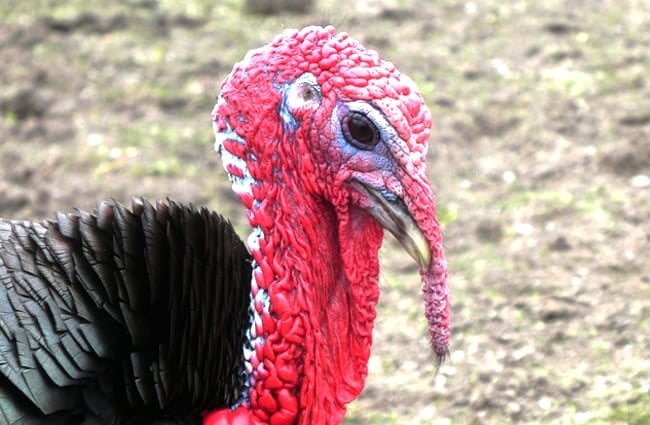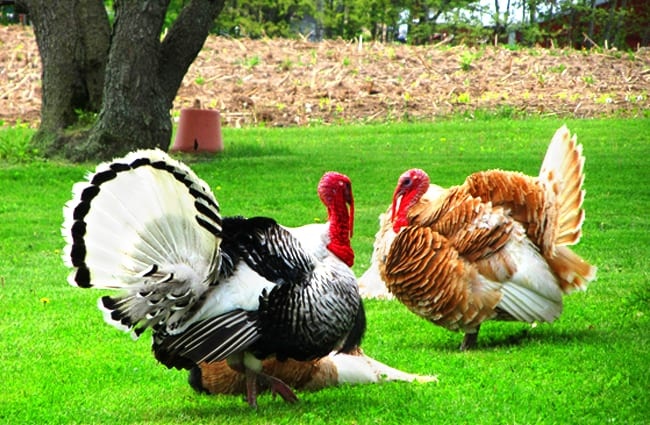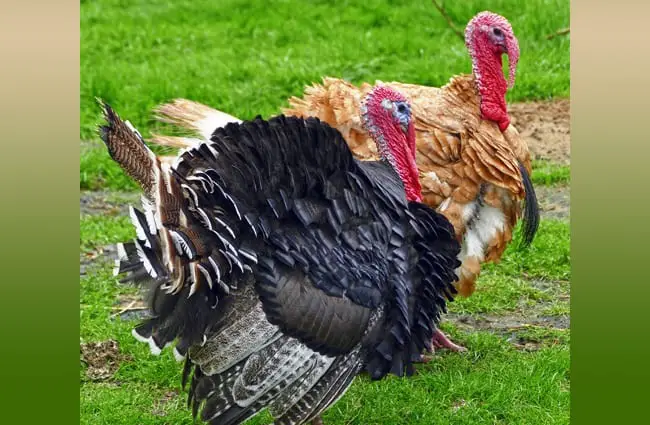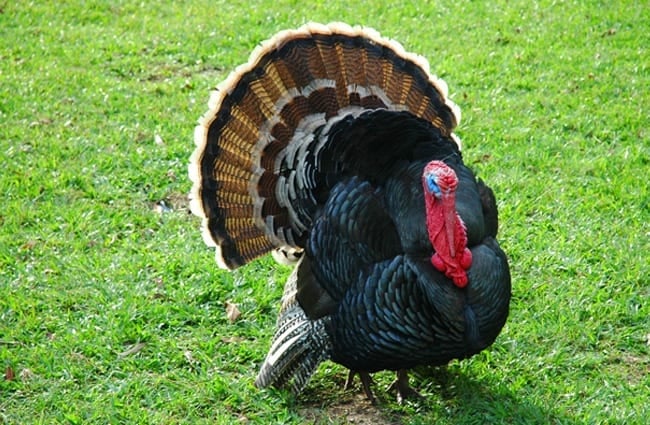A Comprehensive Guide to the Remarkable Turkey
The turkey, a bird steeped in both wildness and domesticity, holds a unique position in the animal kingdom and human culture. Often associated with festive feasts, its story extends far beyond the dinner table, encompassing a fascinating evolutionary history, complex behaviors, and crucial ecological roles. This guide delves into the world of turkeys, exploring everything from their natural habitats and diets to their intricate mating rituals and ongoing interactions with humans.

Origins and Evolution
A Glimpse into the Past
The story of the turkey begins millions of years ago, with its origins traced back to ancestors inhabiting North and Central America. Fossil evidence suggests early turkey-like birds existed during the Paleocene epoch, gradually evolving into the species we recognize today. The modern wild turkey, Meleagris gallopavo, is believed to have originated around 200,000 years ago. Interestingly, the name “turkey” is a historical misnomer. When European settlers arrived in North America, they observed these birds and, due to trade with the Ottoman Empire that brought exotic goods, mistakenly associated them with birds imported from Turkey. The name stuck, despite the birds being native to a completely different continent.
Species Diversity
While the wild turkey is the most well-known, several subspecies exist, each adapted to specific regional environments. These include the Eastern, Osceola (Florida), Rio Grande, Merriam’s, and Gould’s turkeys. Domestic turkeys, bred for meat production, are derived from the Mexican subspecies of the wild turkey and have undergone significant genetic changes through selective breeding.
Habitat and Distribution
Wild turkeys are native to North America, ranging from southern Canada through the United States and into Mexico. They exhibit remarkable adaptability, inhabiting diverse ecosystems including forests, woodlands, grasslands, and even suburban areas. These birds are not strictly forest dwellers; they require a mix of wooded areas for roosting and nesting, coupled with open fields or grasslands for foraging. Water availability is also essential for their survival.

Diet and Foraging Behavior
Turkeys are omnivorous, with a highly varied diet. Their food preferences change seasonally, reflecting the availability of resources. In spring and summer, they primarily consume insects, berries, seeds, and lush vegetation. As autumn arrives, their diet shifts toward hard mast like acorns, beechnuts, and other nuts, providing the energy reserves needed for winter survival. They also consume grains and agricultural crops when available.
Turkeys forage primarily on the ground, scratching through leaf litter and vegetation in search of food. Their strong legs and feet are adapted for walking and running, allowing them to cover considerable distances each day while foraging. They can also take short flights to escape predators or reach food in trees.
Social Behavior and Reproduction
A Social Hierarchy
Turkeys are social birds, particularly outside of the breeding season. They typically form flocks, establishing a dominance hierarchy among males. This hierarchy is maintained through displays of aggression, including strutting, gobbling, and feather ruffling. The dominant male, or tom, gains preferential access to mating opportunities.

The Mating Ritual
The spring breeding season is marked by elaborate courtship displays from male turkeys. These displays involve fanning their tail feathers, inflating their wattles, and emitting a characteristic “gobble” to attract females. Males compete fiercely for the attention of hens, often engaging in ritualized battles. The hen selects a mate based on the quality of his display and overall condition.
Nesting and Chick Rearing
The hen builds a ground nest, typically concealed in dense vegetation. She lays a clutch of 10-14 eggs, which she incubates for approximately 28 days. Once the chicks hatch, they are precocial, meaning they are relatively well-developed and able to follow their mother almost immediately. The hen provides protection and guidance for the chicks during their first few weeks of life, teaching them how to forage and avoid predators.

Ecological Role and Interactions
Turkeys play an important role in their ecosystems, contributing to seed dispersal, insect control, and nutrient cycling. Their foraging activities help to distribute seeds, promoting plant growth and diversity. They also consume large numbers of insects, including ticks, reducing the risk of Lyme disease and other insect-borne illnesses.
Turkeys are prey for a variety of predators, including coyotes, foxes, bobcats, hawks, and owls. Their vigilance and ability to fly help them avoid predation. They also serve as an indicator species, reflecting the overall health of their habitat.
Turkeys and Humans
Domestication and Agriculture
The domestication of turkeys began thousands of years ago in Mesoamerica, where they were raised for food and ceremonial purposes. Spanish explorers introduced turkeys to Europe in the 16th century, and they quickly became a popular source of meat. Today, turkeys are one of the most widely consumed poultry species in the world, raised on a massive scale for commercial production.

Conservation Status and Challenges
While wild turkey populations have rebounded significantly in recent decades thanks to successful conservation efforts, they still face a number of challenges, including habitat loss, fragmentation, and predation. Maintaining healthy turkey populations requires ongoing habitat management, responsible hunting practices, and efforts to mitigate the impacts of climate change.
Encountering Turkeys in the Wild – A Guide
If you encounter a wild turkey, it’s best to observe it from a distance. Avoid approaching or attempting to feed the bird. If a turkey displays aggressive behavior, such as puffing up its feathers or gobbling loudly, slowly back away while maintaining eye contact. Never turn your back on a turkey, as this may trigger an attack.
Caring for Turkeys in Captivity
Providing appropriate care for turkeys in captivity requires a spacious enclosure with access to both indoor and outdoor areas. The enclosure should be well ventilated and provide protection from predators and harsh weather. Turkeys need a balanced diet consisting of grains, seeds, insects, and leafy greens. Regular cleaning and sanitation are essential to prevent the spread of disease. It is critical to provide enrichment to avoid boredom, such as dust bathing areas, perches, and opportunities for foraging.

Fascinating Turkey Facts
- Turkeys can run at speeds of up to 25 miles per hour.
- They can fly short distances, reaching altitudes of up to 60 feet.
- A group of turkeys is called a “rafter” or a “flock”.
- Wild turkeys roost in trees at night for protection from predators.
- Male turkeys, or toms, have a distinctive beard of modified feathers growing from their chest.
- Turkey poults (young turkeys) are covered in soft, downy feathers when they hatch.
- Turkeys have excellent vision, allowing them to detect predators from a distance.
- The fleshy appendage hanging from a turkey’s beak is called a wattle.
- Turkeys communicate using a variety of vocalizations, including gobbles, clucks, and purrs.
From their evolutionary origins to their ecological roles and cultural significance, turkeys are remarkable birds deserving of our admiration and respect. Understanding their biology and behavior is crucial to ensuring their continued survival and appreciating their unique place in the natural world.

![Red Angus Closeup of a beautiful Red Angus cowPhoto by: U.S. Department of Agriculture [pubic domain]https://creativecommons.org/licenses/by/2.0/](https://animals.net/wp-content/uploads/2020/03/Red-Angus-4-238x178.jpg)




![Red Angus Closeup of a beautiful Red Angus cowPhoto by: U.S. Department of Agriculture [pubic domain]https://creativecommons.org/licenses/by/2.0/](https://animals.net/wp-content/uploads/2020/03/Red-Angus-4-100x75.jpg)

